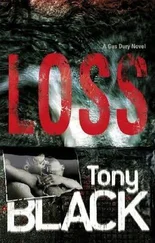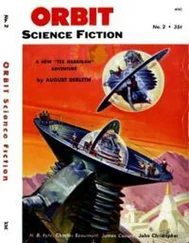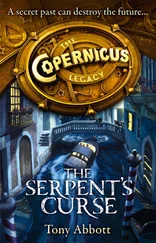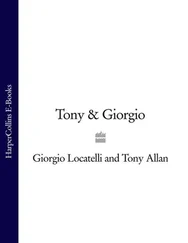This sense of hopelessness and impending disaster was everywhere. ‘For the past two months’, reported Janet Flanner from Paris in March 1947, ‘there has been a climate of indubitable and growing malaise in Paris, and perhaps all over Europe, as if the French people, or all European people, expected something to happen, or, worse, expected nothing to happen.’ The European continent, as she had noted a few months before, was slowly entering a new ice age. George Kennan would have agreed. In a Policy Planning Staff paper six weeks later he suggested that the real problem was not Communism, or if so then only indirectly. The true source of the European malaise was the effects of war and what Kennan diagnosed as ‘profound exhaustion of physical plant and spiritual vigour’. The hurdles the continent faced seemed too great, now that the initial burst of post-war hope and rebuilding had drained away. Hamilton Fish, editor of Foreign Affairs , the influential house journal of the American foreign policy establishment, described his impressions of Europe in July 1947:
‘There is too little of everything—too few trains, trams, buses and automobiles to transport people to work on time, let alone to take them on holidays; too little flour to make bread without adulterants, and even so not enough bread to provide energies for hard labor; too little paper for newspapers to report more than a fraction of the world’s news; too little seed for planting and too little fertilizer to nourish it; too few houses to live in and not enough glass to supply them with window panes; too little leather for shoes, wool for sweaters, gas for cooking, cotton for diapers, sugar for jam, fats for frying, milk for babies, soap for washing.’
It is widely believed by scholars today that for all the contemporary gloom the initial post-war recovery and the reforms and plans of the years 1945-47 laid the groundwork for Europe’s future well being. And to be sure, for western Europe at least 1947 would indeed prove the turning point in the continent’s recovery. But at the time none of this was obvious. Quite the contrary. World War Two and its uncertain aftermath might well have precipitated Europe’s terminal decline. To Konrad Adenauer like many others, the scale of European chaos seemed worse even than in 1918. With the precedent of the post-World War One mistakes uppermost in their thoughts, many European and American observers indeed feared the worst. At best, they calculated, the continent was in for decades of poverty and struggle. German residents of the American Zone expected it to be at least twenty years before their country recovered. In October 1945 Charles de Gaulle had imperiously informed the French people that it would take twenty-five years of ‘furious work’ before France would be resuscitated.
But long before that, in the pessimists’ view, continental Europe would collapse back into civil war, Fascism and Communism. When US Secretary of State George C. Marshall returned on April 28th 1947 from a Moscow meeting of Allied Foreign Ministers, disappointed at Soviet unwillingness to collaborate in a solution for Germany and shaken by what he had seen of the economic and psychological state of western Europe, he was clear in his own mind that something rather dramatic would have to be done, and very soon. And judging from the resigned, doom-laden mood in Paris, Rome, Berlin and elsewhere, the initiative would have to come from Washington.
Marshall’s plan for a European Recovery Program, discussed with his advisers over the next few weeks and made public in a famous Commencement Address at Harvard University on June 5th 1947, was dramatic and unique. But it did not come out of nowhere. Between the end of the war and the announcement of the Marshall Plan, the United States had already spent many billions of dollars in grants and loans to Europe. The chief beneficiaries by far had been the UK and France, which had received $4.4 billion and $1.9 billion in loans respectively, but no country had been excluded—loans to Italy exceeded $513 million by mid-1947 and Poland ($251 million), Denmark ($272 million), Greece ($161 million) and many other countries were indebted to the US as well.
But these loans had served to plug holes and meet emergencies. American aid hitherto was not used for reconstruction or long-term investment but for essential supplies, services and repairs. Furthermore, the loans—especially those to the major western European states—came with strings attached. Immediately following the Japanese surrender President Truman had imprudently cancelled the wartime Lend-Lease agreements, causing Maynard Keynes to advise the British Cabinet, in a memorandum on August 14th 1945, that the country faced an ‘economic Dunkirk’. Over the course of the following months Keynes successfully negotiated a substantial American loan agreement to supply the dollars that Britain would need to buy goods no longer available under Lend-Lease, but the American terms were unrealistically restrictive—notably in their requirement that Britain give up imperial preferences for its overseas dominions, abandon exchange controls and make sterling fully convertible. The result, as Keynes and others predicted, was the first of many post-war runs on the British pound, the rapid disappearance of Britain’s dollar reserves and an even more serious crisis the following year.
The terms of the loan negotiated in Washington in May 1946 between the US and France were only slightly less restrictive. In addition to a write-off of $2.25 billion of wartime loans, the French got hundreds of millions of dollars in credits and the promise of low-interest loans to come. In return, Paris pledged to abandon protectionist import quotas, allowing freer entry to American and other foreign products. Like the British loan, this agreement was designed in part to advance the US agenda of freer international trade, open and stable currency exchanges and closer international cooperation. In practice, however, the money was gone within a year and the only medium-term legacy was increased popular resentment (much played upon by the Left) at America’s exploitation of its economic muscle.
By the spring of 1947, then, Washington’s bilateral approaches to Europe’s economic troubles had manifestly failed. The trading deficit between Europe and the US in 1947 would reach $4,742 million, more than double the figure for 1946. If this was a ‘hiccup of growth’, as later commentators have suggested, then Europe was close to choking. That is why Ernest Bevin, the British Foreign Minister, responded to Marshall’s Commencement Address by describing it as ‘one of the greatest speeches in world history’, and he was not wrong.
Marshall’s proposals were a clean break with past practice. To begin with, beyond certain framing conditions it was to be left to the Europeans to decide whether to take American aid and how to use it, though American advisers and specialists would play a prominent role in the administration of the funds. Secondly, the assistance was to be spread across a period of years and was thus from the start a strategic programme of recovery and growth rather than a disaster fund.
Thirdly, the sums in question were very substantial indeed. By the time Marshall Aid came to an end, in 1952, the United States had spent some $13 billion, more than all previous US overseas aid combined. Of this the UK and France got by far the largest sums in absolute amounts, but the relative impact on Italy and the smaller recipients was probably greater still: in Austria, 14 percent of the country’s income in the first full year of the European Recovery Program (ERP), from July 1948 to June 1949, came from Marshall Aid. These figures were enormous for the time: in cash terms the ERP was worth about $100 billion in today’s (2004) dollars, but as an equivalent share of America’s Gross Domestic Product (it consumed about 0.5 percent of the latter in the years 1948-1951) a Marshall Plan at the beginning of the twenty-first century would cost about $201 billion.
Читать дальше












